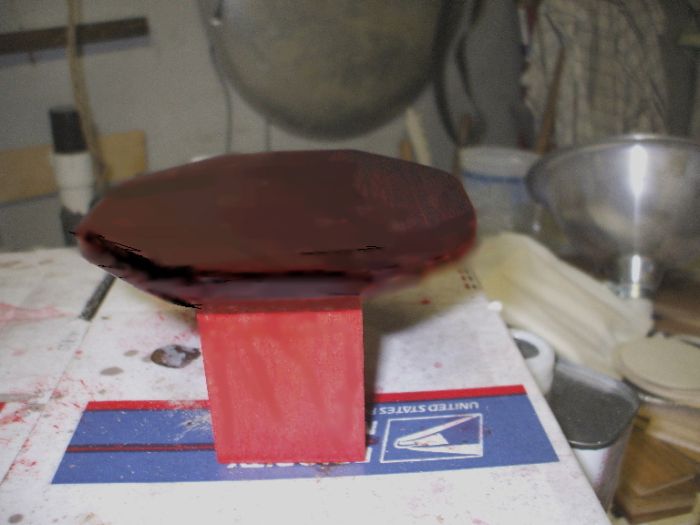Finishing Delays and Wood Movement in Solid Wood Cabinets
Woodworkers discuss the risks involved when one side of a solid-wood cabinet panel is finished a week or two before the other side. June 18, 2009
Question
How beneficial would it be to finish the inside of a cabinet before assembling and then finish the outside? My skills at spraying the inside of cabinets could be a bit better, so I thought possibly after gluing up the raised panel sides, and face frame and interior bottom shelf, to go ahead and finish the one side. Then I would put it together, add the finishing trim molding (decorative flutes/rosettes, bottom and top moldings) and finish the outside. Would there be a good chance of the sides moving out of shape as only one side was finished? This is all out of red oak. Or should I do as always and just put it all together and finish it without the back on it?
Forum Responses
(Furniture Making Forum)
From contributor R:
I would suggest that you buy pre-finished plywood.
From the original questioner:
Itís kind of tough to make raised panels out of plywood. Iím just trying to find out how likely bowing, cupping, and warping would occur if you only finish one side and then not finish the other side for a week or so.
From contributor R:
Maybe I don't understand the question but I build the boxes with pre-finished plywood. I then build the face-frames and doors and finish them before attaching the face-frames and doors.
From contributor G:
I don't like the prefinished plywood. By the time I finish handling it, it has scratches on it. So I pre-finish all my interiors first and tape any dadoes. I use a piece of cardboard to block off the interiors when I finish the exterior. I usually glue the FF with clamps so I don't pre-finish them.
From contributor F:
I also use the pre-finished which works great, althoug when you have a cabinet with glass doors that doesn't fly. I spray the parts flat as it's is easier and much better quality, then assemble. And as contributor G said, tape over any areas that will get glue at assembly.
From contributor D:
Solid wood raised panels and such will be just fine under the following conditions:
The temperature and humidity stay the same/within a reasonable range with no large or quick changes one way or the other during this period of exposure.
Your lumber is properly dried and acclimated with no internal stresses that would show up under M/C exchanges.
From contributor A:
I assume you are concerned about exposed end panels. Most people build a prefinished box. You can apply the faceframe, then while the exposed endpanel is glued and clamped to the faceframe it can be screwed to the prefinished side of the cabinet. Cut a piece of cardboard and stuff it in the cabinet, tape it off, and spray the cabinet with the exposed end. Most of the cabinets in a kitchen only need to have the faceframe sprayed, so we apply them after pre-finishing.
From the original questioner:
Everyone assumes I am making kitchen cabinets. I do make those also, but in this case these are custom made cabinets that will sit in a living room on each side of a large TV, (to hold the electronics) so it is a finished piece of furniture and not a cabinet. In other words (no plywood allowed) at least not for this customer. Itís solid wood only (not that plywood isnít solid, but you get my meaning).
From the original questioner:
Solid wood cabinetry is vanishing as a viable design option since even woodworkers are scared of wood moving. Just learn the basics and go for it.
From contributor S:
Either flatline finish your cases or assemble them and spray them with the backs off. Your spraying techniques will improve - they'll have to because spraying the insides of boxes is a challenge. Your biggest spraying challenges are with chairs and stools if that makes you feel any better about trying to do the insides of boxes.
If you finish one side and not do the other side for a week or so, there is a risk. You need a good strategy for how your solids are going to be stored until assembly. Bowing could occur just from leaning them up (lay the parts flat, fully flat but beware of finish printing issues when stacking parts). Large furniture manufactures finish assembled pieces all at once. Cabinet manufactures tend to go with a flatline finish-as-you go and use drying racks.
With all your concern about swell and shrink, cupping and bowing, have you metered your woods so that you fall between 6% - 7% MC? Any less or any more and you have a situation where the woods create their own instability as they try to reach their own moisture equilibrium content.
From contributor R:
It would be best to finish the inside and outside at the same time (or as close to it as you can). Most times you could probably get away with a short time between inside and out but I find that when I try to tempt fate I usually lose. A little skill in spraying interiors should be fine as long as you don't thin too much and use some retarder to hold your finish open long enough so that you don't get orange peel.
From the original questioner:
I have changed my approach to building this particular furniture with the top and bottom dadoed in so I will build the units with the top and bottom shelves installed, put all the exterior molding on, add temporary back supports, remove the shelves and then finish inside and out. When completed, slide the shelves in just taking the fronts so they can expand towards the rear. That way there should be very minimal overspray and no corners to worry about.
